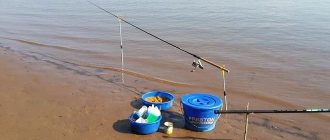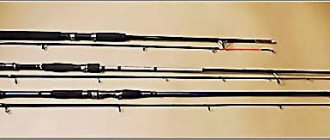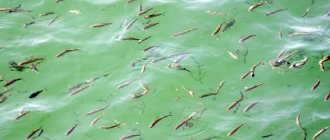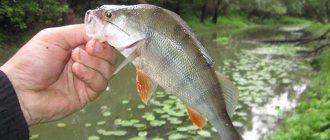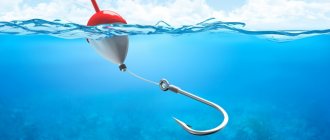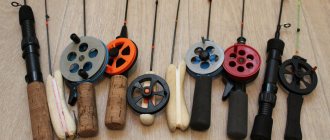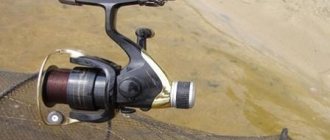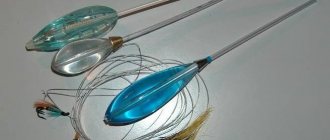The equipment of an onboard bottom or float fishing rod consists of the correct selection of elements of summer gear that are convenient for fishing from a boat in open water - in spring, summer, autumn.
As a rule, the equipment of an onboard bottom includes a fishing rod (rod) of one length or another, a homemade nod (guard), a fishing line with a leash, a sinker or sinker system and a hook or jig. An additional accessory for the equipment can be considered a stand for fishing rods, convenient for placement in a rubber or stationary boat.
On five pages of this topic, some methods of fishing in the summer with side rods from a boat and completing bottom rigs with homemade nods will be revealed. Particular attention will be paid to the shape of the sinkers and methods of attaching them to the supporting line of the bottom tackle.
Separately from this topic, those interested can get acquainted with the ring, which is also a type of on-board bottom fishing rod, equipped for fishing from a boat on the river. True, a bottom sinker of an unusual round shape in the form of a ring is built into the ringing equipment.
Perhaps one of the fishermen would like to repeat, using ready-made drawings, a homemade foam stand for onboard bottom fishing rods with vertical rigs and compartments for storing baits for catching certain fish during summer fishing.
Onboard bottom fishing rod for summer fishing
An onboard bottom fishing rod with equipment, configured for summer fishing on a moderate river, is shown in the photo. To indicate fish bites on a donkey hook, a homemade nod made from a clock spring is built into the equipment. The length of the fishing rod is 0.85 meters.
An onboard bottom fishing rod belongs to a class of gear designed for catching fish during summer fishing using float and vertical rigs from the side of any floating craft. Moreover, following the definition, the length of a fishing rod can be any.
In my short life, I have had the opportunity to catch fish during summer fishing with side bottom rods from sleds (small rafts), inner tubes, from small rubber and large stationary boats.
Although the rafts do not have clearly defined sides. But the principle of summer fishing with an onboard bottom fishing rod is the same as with a stationary or inflatable rubber boat.
External side bottom fishing rod
For some reason, many fishermen immediately associate the appearance of an onboard bottom fishing rod, as well as the name, with a boat, which, in principle, is true. In any case, this is one of my onboard fishing rods with a bottom rig, which I once used to catch bream during summer fishing from aboard the Kazanka.
But in principle, no one forbids us to fish from ice in similar winter fishing conditions with the same fishing rods or fishing rods of different lengths with similar bottom equipment.
My onboard bottoms when fishing from a rubber boat are often ordinary winter fishing rods, designed both for trolling predators and for catching fish from the carp family. True, for summer fishing, homemade whips of longer length are placed on the tackle
So the name of the tackle “onboard bottom fishing rod” is purely conditional. It is rather a variety or species, a method of summer fishing from a floating device placed on streamers.
As for the rigging of onboard fishing rods on donks, their varieties should be understood in more detail, in relation to the different conditions of summer fishing from the side of a boat.
Onboard bottom fishing rod equipment
Examples of the rigging of onboard bottom fishing rods, which we once used to catch fish during summer fishing trips with “Kazankas” on the Volga, which was not yet polluted by dams, are presented in the photograph under the title of the article.
Pay attention to the arrays of homemade lead bottom sinkers in the rigs of onboard fishing rods, with the help of which the bottom was felt in a powerful current near the fairway of the great Russian river.
Each fisherman, to equip his onboard bottom fishing rods of different lengths, selects an individual configuration in accordance with the characteristics of his watercraft, the body of water preferred or chosen for summer fishing and the fish he intends to catch.
This is the reason why there is such a wide variety of rigs for bottom side rods. In addition, from the side of the boat they catch fish not only from the bottom. Therefore, they do not all have to be bottom-based.
Eg. You can use a float-based live bait rig on one of the onboard fishing rods with thick fishing line to catch predatory fish above the bottom of the reservoir. Then the tackle can also be called side, but it is not bottom.
Linking fishing rod equipment to boat characteristics
The equipment of an onboard bottom fishing rod is, first of all, tied to the characteristics of the floating craft. In other words, to the possibilities and convenience of fishing from a particular boat.
Suppose, on the powerful currents of the Kama or Vetluga, much higher than the confluence of the rivers into the stagnant Volga, you will feel quite uncomfortable in a small boat equipped with bottom fishing rods, shown above in the picture.
For summer fishing on serious rivers with powerful currents, you need fast and more stable vessels, not oared small vessels. And the equipment of onboard bottom fishing rods, as we have already found out, should be more powerful, and the length of the gear should be longer.
Therefore, you have to stand on your rubber boat (Omega-1) in a section of the river with a slower current, linking light equipment to comfortable or more gentle fishing conditions.
Side rod rig for moderate currents
You can see the equipment of an onboard bottom fishing rod for summer fishing from a boat on a moderate river current in the photo. Below in the text is a drawing of a homemade foam stand for onboard fishing rods for fishing from a small boat.
It is no secret that the quality and assortment of fish caught, and, therefore, the effectiveness of the catch, depend on the place chosen for fishing. For me personally, the best in this regard are the mouths of small rivers with moderate currents flowing into the Volga. But only on weekdays.
On weekends, fishing from a boat using side rods with a bottom vertical rig in the described places becomes a real disaster, where the current first drops to moderate, then to weak and finally turns back due to the powerful backwater of water from the reservoir.
After which you have to turn the rubber boat around and anchor at a new fishing spot. Then, in the rigs of onboard fishing rods, replace the sinkers with lead blanks of lighter weight.
If you don’t change anything in the equipment of the onboard fishing rods and fish on the usual moderate current of a small river, then you have to look for a place for summer fishing 10-15 kilometers from the Volga. But the fish in the catch will, of course, be different and much smaller in the total mass.
This is what can be distinguished in the equipment of an onboard fishing rod, configured for catching fish during summer fishing from a small boat in conditions of a moderate river flow near the treacherous Volga.
But with any configuration, the main elements of the equipment of a bottom side fishing rod are: a homemade nod of some elasticity, a sliding or permanently attached weight to the main line of the side bottom fishing rod and a hook or jig with an attachment.
Of these, of course, the most important element of the equipment is a homemade nod (guard), which serves not only as a bite alarm, but also as a fishing device used for guiding the bait on a donkey hook along the bottom along the river flow in the active mode of fishing.
Fishing rod equipment
For onboard fishing rods, equipment is selected depending on the conditions of the reservoir. The most popular configurations:
- The universal set includes a rod up to 2 m long, fishing line, sinker and hook. A float is used as a bite catcher, so an alarm is not installed here. To catch large fish, you need a lot of fishing line, and for this you install a reel. If you intend to catch small fish, then the reel does not need to be mounted.
- The simplest equipment with a minimum set of elements is assembled from scrap parts. It is based on a reel and a signal bell. Instead of a bell, you can install a nod for a winter fishing rod.
- Universal spinning equipment is used for fishing both on the shore and on a boat. If fishing in still water is done from a watercraft, then long casts need not be made. For jig wiring, the role of a bite alarm is played by the feeder tip.
The fishing rod is equipped with a fishing line with a diameter of 0.2 mm. Hooks No. 4-8 are tied to the base or leash. The weight and equipment are attached to the vein using a triple swivel or loop. The place where the wire exits the load can be soldered.
To make the equipment sliding, the required weight is fixed on both sides at a distance of 10 cm and the main fishing line is threaded through it.
For a rigid rod and for catching small fish, a nod is mounted, this allows you to see how the fish bites the bait.
Homemade nod of a side fishing rod
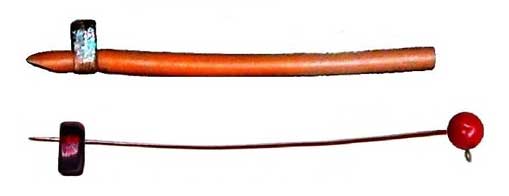
Homemade nods for fishing with side rods on a moderate river flow are posted in the picture.
The nods on my side bottoms are different: from rubber guards to shock absorbers with steel springs. I build these same homemade nods into the equipment of winter fishing rods when fishing in winter from ice - either for trolling in a plumb line, or for fishing on river currents. The length of the fishing rods does not matter here.
In the top position is shown a homemade nod-guard, made with your own hands in a few minutes from thick medical tubular rubber and a piece of plexiglass. The thickness and diameter of the rubber nod tube is selected to suit the conditions of fishing with side rods during summer fishing.
Nod of the side donkey for the river flow
The stronger the river current, the more powerful the load is placed on the donk. Accordingly, the rubber of a homemade shock absorber or the spring of a metal nod should be more elastic.
Although, within certain limits, adjusting a homemade nod for different fishing conditions with onboard fishing rod rigs is done by adjusting the length of the shock absorber or elastic spring extended from the rubber holder.
Exactly the same nods are in the rigs of my fishing rods, configured to vertically lure predatory fish in winter and summer with homemade spoons and balancers.
The principle of choosing the design of a homemade nod for fishing with an onboard fishing rod is no different from the requirements for gear in the winter. We fish in the summer, if not in the same areas as in the winter, then in similar areas of reservoirs.
Another thing is that for the convenience of fishing from a boat, it doesn’t hurt to make a stand for onboard fishing rods out of foam plastic, inside of which you can provide space for placing donk equipment sets and containers with nozzles.
What is a nod?
The nod is a small device made of elastic material and serves as a bite alarm, and in winter fishing it can be used to control the movement of the jig. The device transmits the slightest movement of the fisherman’s hand to the bait, which thanks to this is in constant motion and becomes more noticeable to the fish. It is thanks to the characteristic style of winter fishing that the nod received this unique name.
As already mentioned, there are two types of lodges: for winter and summer fishing.
But regardless of the fishing period, all nods can be divided into several categories:
- Lavsan. Factory-produced summer and winter mylar nods are in good demand among amateur fishermen. And the reasons are quite clear - they are made of durable material, which is enough for more than one season, and at the same time retain the elasticity of the metal nod. Difficulties arise only when making such a nod at home. The only available material is the tape that is used to tie large boxes in furniture stores. But such homemade nods, as a rule, are only enough for one season, and due to the properties of the material, they will have to be constantly bent.
- When fishing at great depths or in strong currents, it is best to use a metal nod, which has excellent rigidity, and in winter fishing gives the jig a unique and lively game. Such a nod is quite simple to manufacture: the material can be a piece of wire, a spring from a mechanical watch, or any thin metal plate.
- Polycarbonate nods (made of plastic) are among the easiest to make. Everyone has an abundance of consumables - plastic bottles. The only disadvantage of such nods is their low strength.
- The spring guard is perfect for winter fishing for large fish using a balance beam.
- The cheapest store-bought option is a silicone nod. However, the material wears out quickly, cracks and is not very convenient to use.
Homemade stand for onboard fishing rods
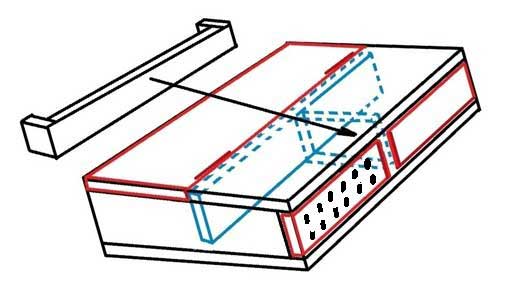
The compartments of a homemade foam plastic stand, made with your own hands for summer fishing with onboard fishing rods from a boat, are shown in the drawing. Decide for yourself the length, width and height of the stand.
You can glue a small foam plastic box of the stand with the required dimensions using the technology discussed in the topic Gluing the pencil case of a winter fishing box. Just in case, on the page I put a drawing of a homemade foam stand suitable for placing onboard fishing rods in a boat.
I have a homemade stand box glued together from 8-10 mm thick hard foam plates in the form of a container with three compartments, the largest of which can accommodate several side fishing rods with the hooks removed.
The lid of the large compartment of the onboard fishing rod stand on two homemade hinges hinges upward from the left side towards the center of the rubber boat.
Compartments of a homemade stand for onboard fishing rods
The covers of two small compartments open in a horizontal plane from the corners of the homemade stand to the starboard side of the boat. Their hinge hinges are glued in the middle of the side edge of the foam stand.
One of the compartments is used to store in the foam cavity of the stand various attributes of homemade onboard bottom fishing rods, which may be needed directly during summer fishing from a rubber boat. For example, homemade nods and bite alarms of different designs and systems.
In the third compartment I store and protect from the scorching rays of the summer sun the baits and attachments necessary for fishing with onboard rods.
If you intend to make the same homemade stand for your onboard fishing rods and will store baits in a container while fishing from a boat, then take care of the ventilation of the compartment. Why at least poke holes in the lid. Make a small compartment for attachments with a hinged lid.
A low side is glued along the arrow above the side compartments, which will prevent side fishing rods with bottom equipment from sliding to the bottom of the boat.
Folding foam strips can be made using the technology described in the topic “Hinge connection of the lid to the butterfly”.
But, of course, a homemade stand for your onboard fishing rods may look a little different depending on the convenience of fishing on your personal stationary or rubber boat. Here I presented only the idea embodied in the drawing of combining a stand with a container for storing and transporting onboard fishing rods to fishing and back.
Fishing technique and tactics
It is advisable to load the selected promising place with bait for a couple of days before fishing so that the bream gets used to the taste and the fishing point itself. Immediately before fishing, intensive feeding is done. Already after half an hour or two after casting the bait, the bites should begin. Bream bites are indicated by actions in which the float rests on the water, and the nod rises to the top; the guard for the bottom fishing rod makes a continuous sound. Any of these signals require the angler to set the hook immediately.
Having felt the severity of the catch of the trophy, they begin to carefully fish, trying to loosen the line or move the rod in the direction of the fish's movement when there is strong resistance, reeling in or lifting the rod when they feel a weakening of the pull. They try to bring the bream to the surface of the water, giving it a breath of air, after which it is pacified and gets into the boat with a net. The best fishing time is early morning, with the sky still twilight. On sunny and especially hot days, bream is less active. On cloudy, warm days with light rain and medium waves, the bite is more intense.
iarybak.ru
No one has ever considered fishing with side rods from a boat as a sport, but it is still one of the most productive, inexpensive and at the same time very exciting ways of summer fishing.
Typically, a side fishing rod is considered a rather crude “folk” tackle. However, you can achieve excellent results and get maximum pleasure at low cost with such a fishing rod.
Manufacturing, equipment and fishing.
There are many options for side rods these days. This article will describe step by step how to make a light and small fishing rod to catch white fish in the current from under the feed. Such tackle will be intended for technical fishing using a reel and rod (in some areas such reels may not be installed at all, and after hooking the fishing line is selected manually).
The photo below shows all the necessary tools and materials that you will need to make a side fishing rod.
Whip.
There are fishermen who like to control large forms, up to approximately two meters in length. And some people prefer to have short rods in the boat, so that their size does not exceed 60 cm. Following the main indicators (weight, strength, length and action), the fiberglass end from Chinese telescopic rods is well suited, which perfectly ties large fish at a short distance and is known for its endurance. These whips are sold as spare options. Their price is approximately 50 cents.
Lever.
The best handle for such a fishing rod is a cork. It may seem strange, but there is no shortage of this material. You can use narrow wine corks or mushroom-shaped corks for sparkling wines individually to suit your hand, create any configuration, and also play with shape and color.
Using a drill with a diameter of 6 mm, you need to drill the plugs along the axis and assemble a handle from them, pulling the parts of the plugs through the narrow end of the whip. The end cap should be cut off. Then the plugs need to be removed and carefully placed on the glue one at a time.
Reel mount.
Reels should be small and inertia-free. Inexpensive Chinese models work well. In such reels, the throwing element used for fishing is practically absent, and cords are not used at all. The most important thing is a well-functioning clutch. In this case, winter soap dishes will work well. Spincast reels equipped with a closed spool are also perfect.
In this article, the “old-fashioned” method of attaching the coil will be used. So, you should make 3-4 turns of electrical tape on the side of each paw. You can also use a good cheap factory method - a reel seat, which is designed to equip Bolognese fishing rods.
Rings.
The factory rings must be used. One of them should be the one that is used in telescopic fishing rods as a loose discharge (it is usually fixed approximately in the middle of the whip). In general, it can be glued. In this article it was simply tensioned and wedged.
Quivertip (nod).
An excellent option is a winter nod in the shape of a spring with a ball. After installing such a nod, the fishing line passes inside the spring and through the ball itself. Such an element performs a certain number of functions - it registers a bite, compensates for the vibrations of the boat on the wave, and also plays the role of a tulip. During night fishing, chemical fireflies also attach well to it.
Onboard fishing rod rigging.
Line should be used with a diameter of approximately 0.2-0.25 mm. with a large measure of stretch, so that at close range it is possible to compensate for the jerks of all kinds of captured trophies, as well as sharp bites of river chub. You don’t need to wind the line much, about 20-25 meters. Leashes should be made from a slightly thinner fishing line and a length of 25 to 60 cm.
Loads must be secured with an “inline” fastening with an anti-twist outlet. The weight should be approximately 30-50 grams (depending on the strength of the current in the place where fishing occurs).
Above the sinker, which is located on the main line, you need to place a silicone stopper, which is used to ensure that the load itself does not hit the nod during transportation. When fishing, the stopper needs to be raised by about 20-30 cm.
At the end of the main line, you should tie a swivel with or without a clasp (in order to instantly change leashes twisted by the current). Carp anglers usually have special plastic fasteners that are used to change leads. The swivel assembly must be covered with a hard rubber bead. This method was taken from carp fishing. Such things are also called “anthers”. It needs to be pulled over the ring and the swivel knot, so the leash will not get tangled through a piece of fishing line tied in a knot.
Now the onboard fishing rod is completely ready.
Actually, this is an interesting version of a side fishing rod, made by yourself. By the way, such a fishing rod can be suitable for many types of winter fishing. The cost of such a product without a coil will cost approximately one and a half dollars.
usamodelkina.ru
Length of onboard fishing rod for fishing from a boat
The length of an onboard fishing rod designed for fishing from the side of a boat depends only on the convenience of catching fish with the tackle and the preferences of the fisherman. And, if you use containers to store some equipment, then the length of the disassembled fishing rods will also depend on the length of the internal size of the stand compartment.
Perhaps some of the fishermen will find the whips on my side fishing rods too short. But this is also a matter of taste.
For example, even when fishing from a boat in summer, I prefer an active method of fishing. And with an onboard fishing rod that hooks the bait or bait on the hook too long, it is more difficult to set the desired game.
These words can also be applied to the equipment of onboard fishing rods, configured to catch fish vertically, both when fishing from ice in winter and from the side of a boat in summer. It is much more convenient to make short retrieves of spinners with an onboard fishing rod of a reasonable length than with tackle with a long hook.
For big fans of trolling from a boat, I suggest testing a combined method of catching pike with a short-length onboard fishing rod while fishing in late summer or autumn.
Forms of side fishing rod sinkers
The most common forms of sinkers for side bottom fishing rods are shown in the photograph. It varies from person to person, but on my fishing trips the shape of the sinker for the bottom tackle is chosen to suit the fishing conditions at a specific place in the reservoir.
Side fishing rods - bottoms with sliding sinkers in the shape of an olive (1) and leashes creeping along the bottom, suggest stationary fishing from a boat. That is, you put, say, a couple of these bottom fishing rods with lines of different lengths on the side of the boat and wait for the fish to deign to pay attention to the hook attachments.
Active fishing is preferable to using an onboard bottom fishing rod with a cone-shaped sinker (2). To do this, the load is rigidly tied to the end of the main line of the tackle.
Conical, round side load
The conical shape of the sinker of the side bottom practically does not allow it to roll across its longitudinal axis during the river flow, due to which there is practically no twisting of the leashes around the main line of the fishing rod. In addition, the position of a sinker of this shape on the bottom will stabilize the force of the current pressure.
I use a small round sinker (3) in the rigs of onboard fishing rods on weak river currents or in shallows, when it is necessary to drive the bait on the hook away from the side of the boat. A large shot rolls well along the hard soils of river bottoms and across the river flow, thanks to which the fish can quickly notice the bait on the hook.
Fishing methods
There are several ways to fish with side rods:
- Bottom fishing (including feeder fishing). A weight is used that lies motionless on the bottom and holds the equipment. It is most often used when fishing for bream. It can use a feeder connected to a fishing rod, but more often the food is simply thrown down by hand. Bank fishing is a type of onboard bottom fishing.
- Fishing with a suspended sinker. It is reminiscent of float fishing, but when fishing on board for bream, the distance from the main sinker to the catch and hook should be greater than when fishing with a float. This is done so that when the wave oscillates, the hook continues to lie on the bottom, without coming off and not scaring away the fish.
- Fishing with a jig. An angler in a boat has less opportunity to make the jig oscillate than an angler on ice due to the waves of the boat. Therefore, they use fairly simple jigs and a fairly simple wide game, expressed in periodically pulling the jig up and free falling. This type of fishing is usually practiced in late autumn and allows you to attract bream when bait is no longer so effective.
- Ring fishing. The fishing method is well suited for catching bream in the current. They use a feeder, which is lowered into the water on a separate cord and a weight that moves freely along this cord. The weight can be attached to a fishing line or can also be walked freely on it. At the end of the fishing line there is one or more leashes with hooks, pulled away by the current.
You can ask your question to our author:



